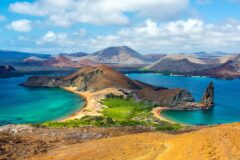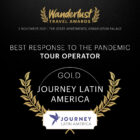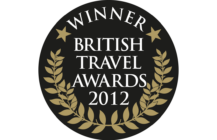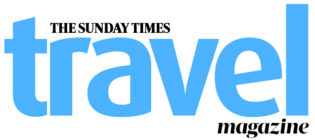
Overview & Highlights
The Argentine Andes and the barren Altiplano of southern Bolivia make up on of the most remote and traditional regions of Latin America. Explore the colonial cities and indigenous villages in wilderness landscapes, the salt flats of Uyuni being the highlight.
- Highlights of Humahuaca Gorge
- Tupiza: Guided excursion
- South Bolivia: Salar de Uyuni (salt flats)
- Potosí: City tour and visit to the Casa de la Moneda museum
- Sucre: Guided day trip to Potolo
- La Paz: Guided walking tour
- Lake Titicaca: Boat trip to Isla del Sol (Sun Island)
This holiday takes you to one of the most authentic regions of Latin America. Travel from rainbow-hued gorges of northwest Argentina into remote southern Bolivia. The difficulty of access to the shattered landscapes there has resulted in the communities remaining isolated from changes and modernisation elsewhere. Here you will see smallholdings where subsistence level farmers eke out a living from their adobe farmhouses, and miners work long hours in primitive tunnels. It’s a privilege to be welcomed into their traditional way of life.
That said, Potosí was once one of the largest and most affluent cities in the world: the silver mined in its conical hill contributed to the riches of the Spanish Empire and the Mint was located here. The city’s grand architecture reflects this long-gone prosperity. Buenos Aires, Salta and La Paz are all magnificent colonial cities, contrasting in size and style. Your holiday has many contrasts: the sophistication of Buenos Aires and the featureless, sparkling and sparsely populated Uyuni salt flats are worlds apart.
Outline itinerary
Day 1
Arrive in Buenos Aires. Transfer to your hotel close to the historic centre of the city.
Day 2
At leisure to explore the Argentine capital.
Day 3
Fly to Salta and transfer to your hotel in the city centre.
Day 4
By road into the Humahuaca Gorge.
Day 5
By road to the Bolivian border, continue to Tupiza.
Day 6
By 4WD to Colchani on the Uyuni salt flats.
Day 7
Full day exploration of the salar, overnight in Uyuni.
Day 8
Continue by road to Potosí.
Day 9
Visit Potosi's Casa de la Moneda then continue by road to Sucre.
Day 10
Full day guided tour to Potolo.
Day 11
Fly to La Paz, transfer to hotel close to the colonial centre.
Day 12
Walking tour of the capital.
Day 13
Full day excursion to Lake Titicaca; boat trip to Sun Island.
Day 14
Transfer to airport for your international flight home.
Itinerary
Day 1
Arrive in Buenos Aires. Transfer to your hotel close to the historic centre of the city.
The Argentine capital is an elegant, cultured and cosmopolitan city famed for its interesting museums and the fascinating port district of La Boca, with its cobbled streets and brightly painted houses. It was here that the tango was born, and Diego Maradona honed his footballing skills.
The centre of town is home to the colonial heartland, government buildings and churches, as well as chic shopping districts, which have a nostalgic Parisian feel. The bohemian quarter of San Telmo is full of quaint old houses interspersed with antiques shops, tango bars and classy restaurants. Slightly further out of the centre is the Recoleta district, even more evocative of the French influence, where Evita Perón was laid to rest.
You’ll be staying within walking distance of the historical centre.

Day 2
At leisure to explore the Argentine capital.
At leisure to explore the city. You might stroll along Avenida 9 de Julio, one of the widest boulevards in the world and studded by the Obelisk, an emblematic symbol of the city. On the famous Plaza de Mayo you find the Metropolitan Cathedral, the Town Hall and the Casa Rosada, the presidential palace.
Also of interest are the bohemian, arty La Boca, which was settled and built by Italian immigrants and has streets lined with brightly painted corrugated iron-clad houses, the chic district of Recoleta with its Italianate and belle époque architecture and Puerto Madero, the refurbished port district where former dock installations and features have been preserved alongside a string of restaurants and loft conversions.

Day 3
Fly to Salta and transfer to your hotel in the city centre.
Transfer to the airport and fly to Salta in the northwest. The city is renowned for its beautiful baroque colonial architecture, friendly population and the Andean flavour of its tasty regional cuisine. It lies in the arid eastern foothills of the Andes, the only Argentine region where vestiges of indian heritage are still visible.

Day 4
By road into the Humahuaca Gorge.
Depart Salta for the 3hr drive northwards to the Humahuaca Gorge, famous for its deep terracotta rock strata and giant cacti. The canyon embraces peaceful towns and villages with solid colonial churches and quaint adobe-brick houses.
At the southern end of the gorge is pretty Purmamarca, at the foot of the famous hill of seven colours. The hill’s deeply-defined strata seem constantly to change colour according to the light conditions. Purmamarca is a relaxing place to explore – its dazzling white 17th century church dominates the village square peppered with handicrafts stalls.
An hour beyond Purmamarca is Tilcara, one of the region’s most important settlements where you will have the chance to stop and visit the pre-Inca Pucara fortress which has great views across the town and valley beyond. Just south of Humahuaca village, the Tropic of Capricorn passes though the village of Uquia. Onward to the village of Humahuaca itself, 2,940m above sea level on the Rio Grande. It has an attractive colonial cathedral which affords views of the fantastically coloured hills that surround it.

Day 5
By road to the Bolivian border, continue to Tupiza.
By road north to the Bolivian border at La Quiaca. It’s a bit of a culture shock to cross the international bridge. You will have driven through wild canyon country in Argentina, through some simple villages, but in the northwest of that country the infrastructure is fairly sophisticated, with paved roads and a European-influenced culture. Once you enter Bolivia you find yourself in real wilderness South America, where facilities are relatively primitive, and the isolated inhabitants still live in a centuries-old life of struggle against the harsh elements.
The Bolivian border town of Villazón is a one-street, one-horse town of rudimentary houses, street peddlers and dusty 4WD pick-up trucks. Here there will be a change of vehicle and you will drive 95km through savage, skeletal mountain scenery to Tupiza, a friendly town in a warm fertile valley. Stop at midday en route at a local restaurant for lunch.
In the afternoon you will have a guided excursion into the countryside, dominated by a series of canyons where the stark, mineral-rich rock faces are streaked with colour and through which flows the river San Juan del Oro.

Day 6
By 4WD to Colchani on the Uyuni salt flats.
Climb out of the valley en route to Uyuni. It’s a 6hr journey of a little over 200km through dusty landscapes punctuated by weird wind-fashioned rock formations. It is here that Butch Cassidy and the Sundance Kid are reckoned to have ambushed hapless folk transporting money and minerals to and from the mines.
Upon arrival in Uyuni you will be shown around this isolated, chilly highland town, including a visit to the “train cemetery” full of abandoned, rusting engines evocative of more prosperous and dynamic times.

Day 7
Full day exploration of the salar, overnight in Uyuni.
Travel by 4WD vehicle to the Salar de Uyuni. At 3,650m it’s the highest salt desert in the world and arguably the largest, covering over 12,000 sq km. When the rains fall, the desert is turned into a mirror, salt plains and sky fuse, and the world is turned upside down.
Conditions permitting, travel on to the foothills of the Tunupa Volcano and the village of Coquesa with its ancient fort and petrified mummies. The road takes you deep into the salar to the Isla de Pescadores, a small volcanic island covered in giant cacti. Return to Uyuni.

Day 8
Continue by road to Potosí.
Continue by road to Potosi (3hrs), arriving mid-afternoon.
At an altitude of 4,090m Potosí is the highest city in the world. Its former wealth lay in its silver; today it lies in its history and the grand buildings born from a city that was quite literally founded on a mountain of wealth – the Cerro Rico (Rich Hill) with its rich deposits of silver.
Today only the atrophied remnants of the city’s former wealth remain; ornate churches, monuments, neat cobbled streets and the Casa Real de la Moneda (Royal Mint), one of South America’s finest colonial buildings. The tunnels which honeycomb the Cerro Rico, are as dark and poisonous as the city’s gruesome past.

Day 9
Visit Potosi's Casa de la Moneda then continue by road to Sucre.
Potosí itself, with its narrow streets and grandiose architecture is one of Bolivia’s great treasure troves. Your walking tour takes you to some of the city’s principal historical attractions. These include San Lorenzo church, with its baroque façade of flesh coloured stone mined from the nearby hills. Inside, works of art adorn the ornate altar along with two original paintings by Holguin. Also visit Santo Domingo church and the vast 16th century Cathedral.
The Casa de Real de la Moneda occupies an entire block near the cathedral. The museum has a fascinating history, being not just the Royal Mint, but also a prison, fortress, and HQ for the Bolivian army during the Chaco War. The museum displays crafted silverware, oil paintings and Bolivia’s first locomotive train.
A scenic 3hr drive to Sucre along a paved road descending from the high plains of the stark wilderness of the altiplano, passing crops of peas, beans and cereal.
Sucre lies in a remote valley at, for Bolivia, a relatively benign altitude of 2,800m. Provincial in outlook, it is nevertheless the legislative capital of the country. Its gentle climate, and innate conservatism has helped preserve many of the churches, cloisters, museums and mansions that make this Bolivia’s most beautiful city. There are some nice cake shops and ice cream parlours too, and an optional visit to a weaving project where local artisans are being given assistance to create high-quality craftwork reflecting their Andean traditions.

Day 10
Full day guided tour to Potolo.
Take a breathtakingly scenic drive from Sucre to the mountain range Cordillera de los Frailes. En route you’ll visit the church of Chataquila, which was built to house and protect travellers who were transporting their goods to Sucre. You’ll have the option of a gentle 2.5hr trek down the mountain to Chaunaca along pre-Hispanic (Inca) roads, or to continue by car.
Either way you’ll reach the rustic adobe town of Potolo where you’ll visit a few of the inhabitants’ homes and learn about the weaving process fundamental to this region – from the gathering of the wool to the plant-staining methods used to endow colour. After a picnic lunch, head back to Sucre, taking in the stunning views of the surrounding peaks.
Day 11
Fly to La Paz, transfer to hotel close to the colonial centre.
Fly to La Paz. Set in a deep canyon, dominated by the snow-capped peak of Mount Illimani, La Paz (3,632m) is the highest capital in the world. The colonial core around Plaza Murillo retains much of its quirky Spanish charm, lively with families and children with balloons at the weekend. Beyond, there are cavernous indigenous markets with restaurant grills open to the street and narrow alleyways lined with museums, churches and craft shops. Ambulant vendors in felt bowler hats and colourful shawls crouch below the skyscrapers in tree-lined modern avenues.

Day 12
Walking tour of the capital.
Today you have a guided walking tour through the mystic, colonial streets of Bolivia’s capital. This is a great way to get a real and authentic feel for the place – embracing the hustle and bustle, admiring the vibrant colours and inhaling the local fragrances. A highlight is the intriguing Witches’ Market where you’ll see preserved llama foetuses, charm spells, Pachamama offerings and much more.
Walk on to the renowned, baroque-style San Francisco Church, and the quirky, colonial Plaza Murillo, before heading on towards the cobbled Jaen Street to visit the Costumes Museum and the Gold Museum to discover more about Bolivia’s rich culture and background.

Day 13
Full day excursion to Lake Titicaca; boat trip to Sun Island.
It’s a 2.5hr drive to Copacabana on the shores of Lake Titicaca which attracts many pilgrims who make the trip often from great distances on foot. After lunch, board a motor-powered sailing boat and head across the lake towards Isla del Sol (Sun Island), the legendary birth place of the Inca Empire – you’ll hike to the Yumani village, which is renowned for its historic Inca fountain and staircase, whilst enjoying views of the surrounding snow-tipped Andean ranges. Finally, you’ll sail gently back to Copacabana and return to La Paz for the final night of the holiday.

Day 14
Transfer to airport for your international flight home.
Essentials
Tour info
Transport
1 flight (1hr); 6 road transfers.
Accommodation
This adventurous holiday visits remote locations where accommodation options are limited, however we have selected good value hotels some of which have a good deal of charm.
Meals
Breakfast daily, lunch days 5, 6, 10, 13.
Guides
We carefully select our local partners, some of whom we have worked with for over 25 years. Their English-speaking guides understand the expectations of our clients very well, and are consistently singled out for praise by the latter on their return.
Summary Of Nights
15 days, 14 nights: Buenos Aires 2, Salta 1; Humahuaca 1; Tupiza 1; ; Uyuni 2; Potosí 1; Sucre 2; La Paz 3.
Currency
The unit of currency in Argentina is the Argentine peso. In Bolivia it is the peso Boliviano.
How To Take It
For our latest currency advice for Argentina please see our FAQs section.
Tipping
Tips are welcomed and local guides often rely on their tip as a significant proportion of their income.
Most service industry workers will expect a tip of some kind and so it is useful to have spare change for hotel porters, taxi drivers and the like. It is common to leave 10 – 12% in restaurants.
Insurance
Travel insurance is essential.
Details of our recommended policy can be found on our Travel Insurance page.
Airport Taxes
If you have purchased your flights through Journey Latin America, the international departure tax is usually included in the ticket.
Trip Suitability
There are a few long days of travel on this trip, but there are plenty of stops. This holiday is suitable for all but if you have a disability or other special requirements, please call us.
Climate
In Buenos Aires December to March are the hottest and most humid months, with temperatures sometimes reaching 40°C, and rain which falls in brief, heavy showers. From June to September, temperatures in Buenos Aires are more moderate (10-18°C) and there is plenty of sunshine, but cold fronts can usher in periods of up to several days of cloud and drizzle.
Salta has plenty of sun throughout the year but it can be cool in winter (Jun-Sep), when the trees and vines have lost their leaves. It is drier though, with little rain falling Apr-Oct.
On the salt flats, most rain falls between January and April when the roads can be very muddy and the itinerary around Uyuni is subject to change. The dry season, Jun-Sep, guarantees sun and an easy drive across the flats, but it is even colder at night. Uyuni is always cold at night.
Most rain falls Dec-Mar in both Sucre and Potosí: there is a little less sunshine in this period in what are otherwise sunny cities. Potosí is at a higher altitude and can be very cold at night, especially in Jun-Jul.
The weather in La Paz is dry and sunny Apr-Oct, but it can be cold at night. Dec-Jan can be dull and chilly at this altitude (3,500-3,800m).
Altitude
Because the trip gains altitude slowly, most people are only mildly affected and if you drink plenty of water and allow your body to acclimatise (don’t exert yourself or drink alcohol for the first couple of days at altitude), you’ll probably be OK. Symptoms vary: most common are mild headaches, slight nausea and breathlessness. If you don’t recover in a day or two speak to our representatives; in very rare instances it is necessary to descend to lower altitudes.
Clothing And Special Equipment
If you travel in the Andean dry season, May to October, it will be warm in the sunshine but at altitude chilly in the shade, and at night so you’ll need layered clothing, including fleece, hat, scarf and gloves. From November to April you can expect some rain so you should add waterproofs. In both seasons sunblock, sunglasses and good walking shoes or boots are necessary.
Vaccinations
Preventative vaccinations are recommended against the following: typhoid; polio; tetanus; hepatitis A. You should consult your GP for specific requirements, including advice on yellow fever immunisation.
You can also find helpful information on the Masta Travel Health website.
Visas
Holders of a full British passport do not require a visa, although passports must be valid for at least 6 months after the trip begins. Anyone with a different nationality should enquire with us or check with the relevant consulate.
If flying to the US, or via the US you will need to fill in your online ESTA application.
What's included in the price
- Services of our team of experts in our London office
- Services of Journey Latin America local representatives and guides
- All land and air transport
- Accommodation as specified
- Meals as specified
- Excursions as specified, including entrance fees
Included Excursions
- Highlights of Humahuaca Gorge
- Tupiza: Guided excursion
- South Bolivia: Salar de Uyuni (salt flats)
- Potosí: City tour and visit to the Casa de la Moneda museum
- Sucre: Guided day trip to Potolo
- La Paz: Guided walking tour
- Lake Titicaca: Boat trip to Isla del Sol (Sun Island)
What's not included in the price
- International flights to Latin America
- Tips and gratuities
- Meals other than specified
- Airport taxes, when not included in the ticket
- Optional excursions


































